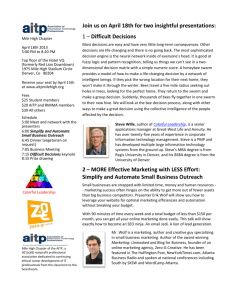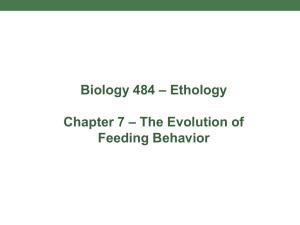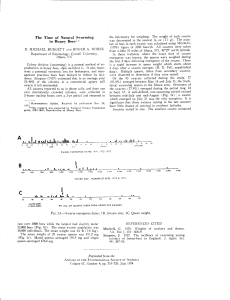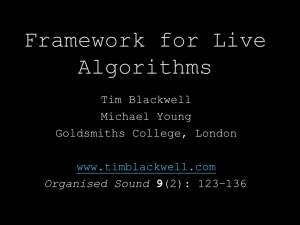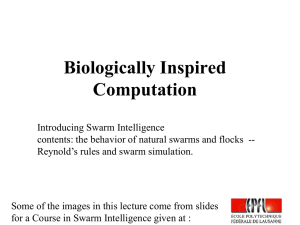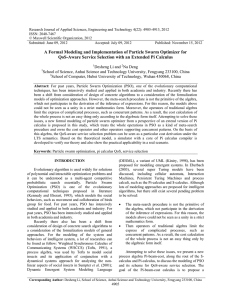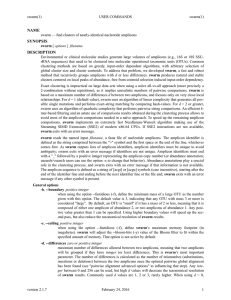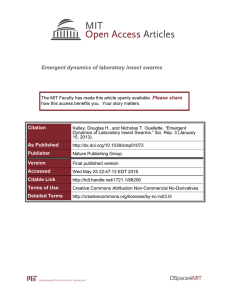SWI_Chapter
advertisement
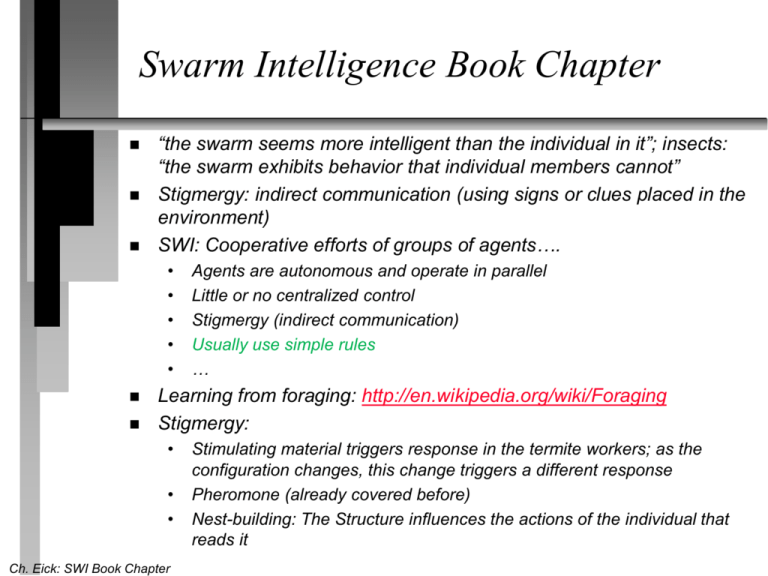
Swarm Intelligence Book Chapter “the swarm seems more intelligent than the individual in it”; insects: “the swarm exhibits behavior that individual members cannot” Stigmergy: indirect communication (using signs or clues placed in the environment) SWI: Cooperative efforts of groups of agents…. • • • • • Agents are autonomous and operate in parallel Little or no centralized control Stigmergy (indirect communication) Usually use simple rules … Learning from foraging: http://en.wikipedia.org/wiki/Foraging Stigmergy: • • • Ch. Eick: SWI Book Chapter Stimulating material triggers response in the termite workers; as the configuration changes, this change triggers a different response Pheromone (already covered before) Nest-building: The Structure influences the actions of the individual that reads it Swarm Intelligence Book Chapter II Natural Clustering 1. Ant cemeteries; ant eggs and micro larvae are sorted in rings by age 2. Simple Agent Rule for clustering (as witnessed in the NetLogo Program): a. Pick up single corpse b. Move away c. Find an area with high density corpses Termites build highly complex structures. How do they do it • • • Micro rules Patterns observed by termites and other sensual input act as sigmergic trigger I did not quite understand Figure4? Did you? Swarm robots: Small simple robots furnished with relatively nonsophisticated ways to communicate. Ch. Eick: SWI Book Chapter Swarm Intelligence Book Chapter III Foraging • • • Ch. Eick: SWI Book Chapter “Get food without wasting too much energy” Bacterial Foraging: – Chemotaxis: Movement along a chemical gradient – Bacterium has two kind of movements: Tumble and run – When encountering an increasing gradientmore running – Additionally, bacteria secrete chemicals that attract each other like in particle swarms – In summary uses some combination of exploration and exploitation Bee Foraging: – Waggle dance (http://www.youtube.com/watch?v=-7ijI-g4jHg ) • Straightline Movement tells where the food is • Duration of dance tells “quality/quantity of food source” • Bees are allowed to sample the nectar (not during the dance) • Depending on the quality of the dance other bees are or are not recruited in exploring the food source • If the food source is good multiple bees will be performing the same dance. Swarm Intelligence Book Chapter IV Flocking (already covered) PSO (already covered). Simple version: New Vector (speed + direction) is computed dependent on • Current Vector • Personal Best multiplied by a random number in [0,2] • Global Best multiplied by a random number in [0,2] and the position of the particle is updated by adding this vector to the current position • PSO provides a significant contribution to optimization practice Current Trends: • Hybrid algorithms • A lot of new paper that approach optimization and multiobjective optimization using Multiple Swarms • Some work that borrows ideas from bacterial foraging algorithms Ch. Eick: SWI Book Chapter

